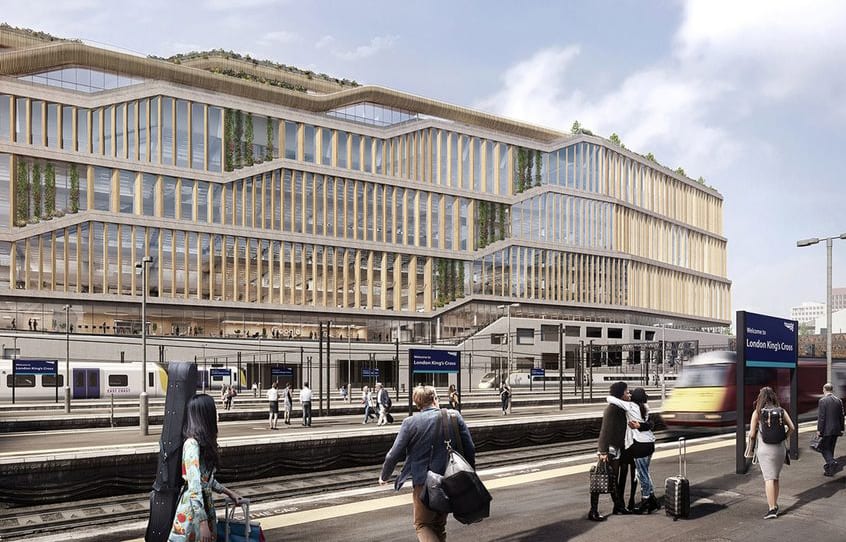Technology giant Google has submitted a planning application to Camden Council for its proposed King’s Cross Campus, intended to be the first wholly-owned and designed Google building outside the United States.
The 11-storey building will have 1 million sq ft of space and will be combined with the current Google building at 6 Pancras Square and an additional third building to create a Google campus which could house 7,000 Google employees.
The building has been described as a “landscaper”, due to the fact that it is as long as London’s Shard is tall.
Designed by London’s Heatherwick Studio and Copenhagen’s Bjarke Ingels Group (BIG), it will feature a natural theme, with all materials sourced through Google’s healthy materials programme, which evaluates all building products based on “established industry standards that value transparency and material health”.
The new building is billed as adding to the so-called “Knowledge Quarter” and King’s Cross’s growing economy.

Thomas Heatherwick, founder of Heatherwick Studio, said: “As my home and the home of my studio for more than 15 years, I have a close relationship with King’s Cross.
“The area is a fascinating collision of diverse building types and spaces and I can’t help but love this mix of massive railway stations, roads, canals and other infrastructure all layered up into the most connected point in London.
“Influenced by these surroundings, we have treated this new building for Google like a piece of infrastructure too, made from a family of interchangeable elements which ensure that the building and its workspace will stay flexible for years to come.”
The BIG-Heatherwick design was chosen for the King’s Cross Campus in November last year.
The pair are also collaborating on Google’s Silicon Valley HQ.
If their planning application succeeds construction is due to commence in 2018.
Images courtesy of Heatherwick Studio
The area is a fascinating collision of diverse building types and spaces and I can’t help but love this mix of massive railway stations, roads, canals and other infrastructure all layered up into the most connected point in London.– Thomas Heatherwick












